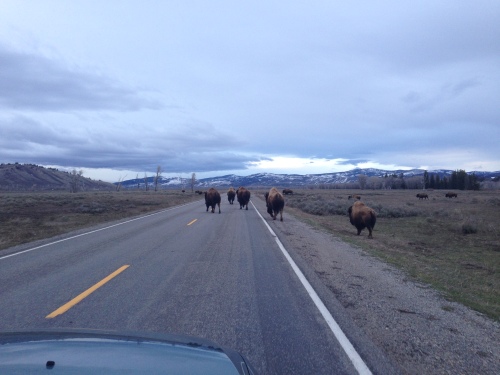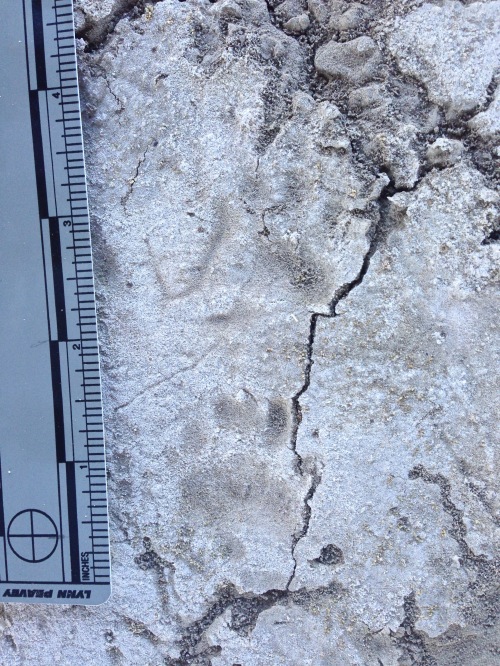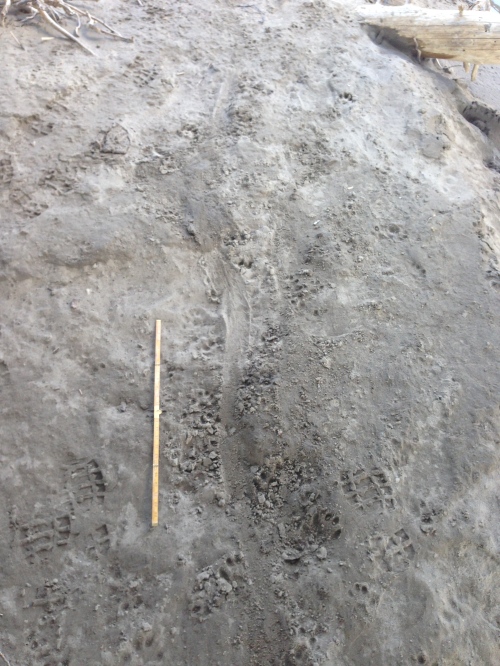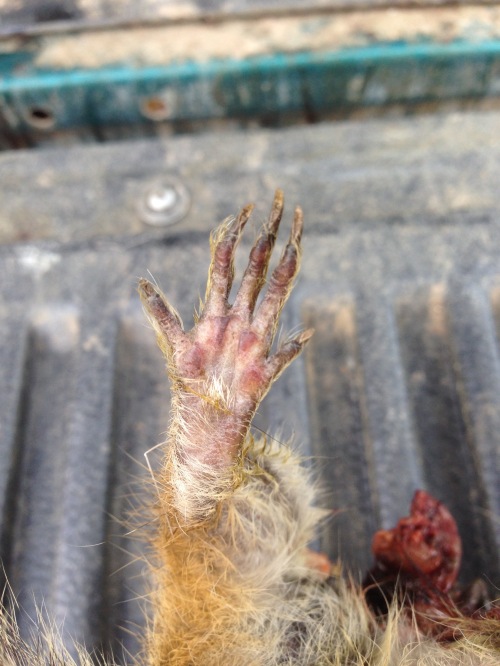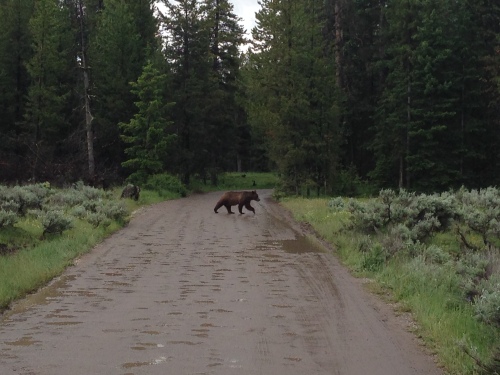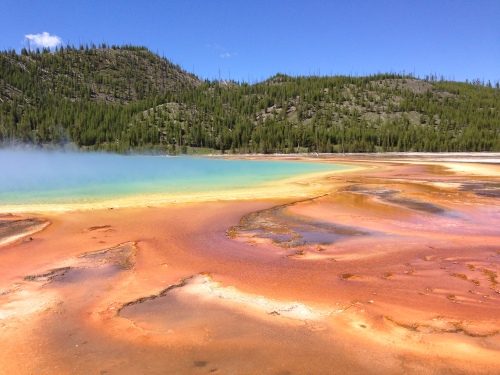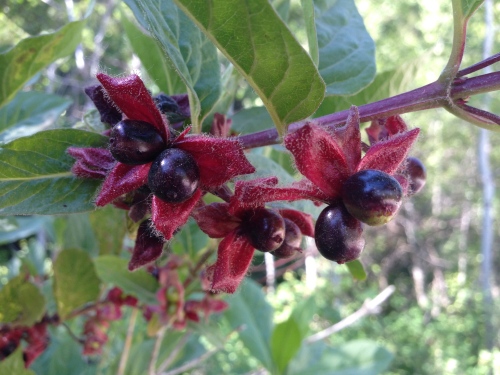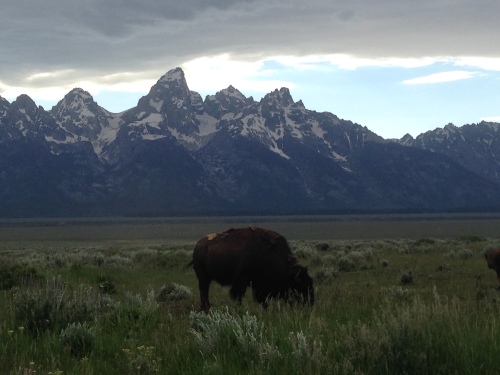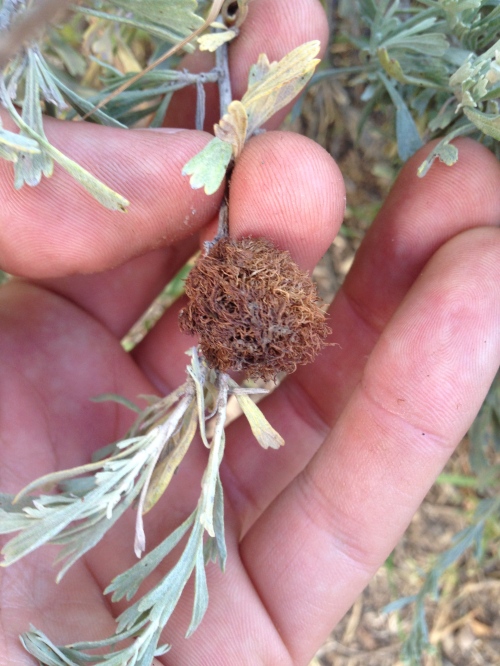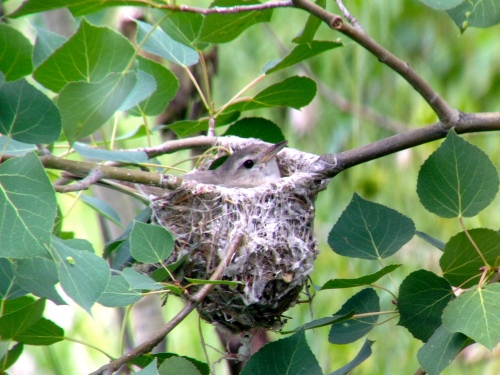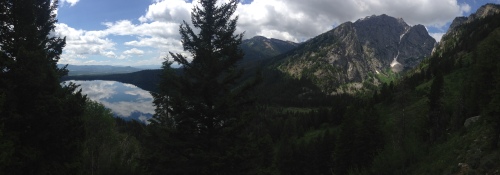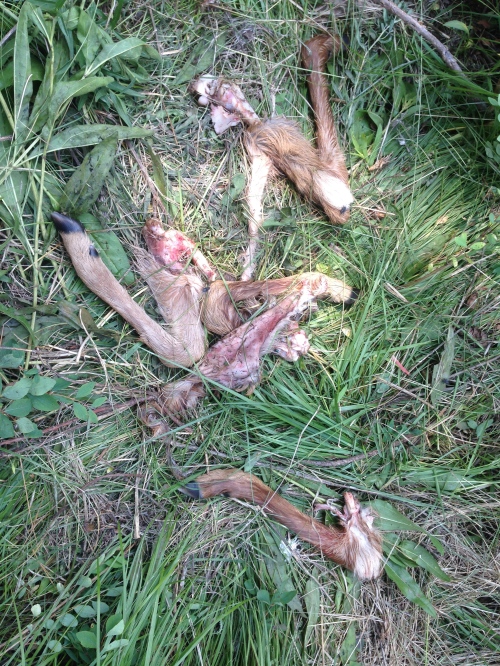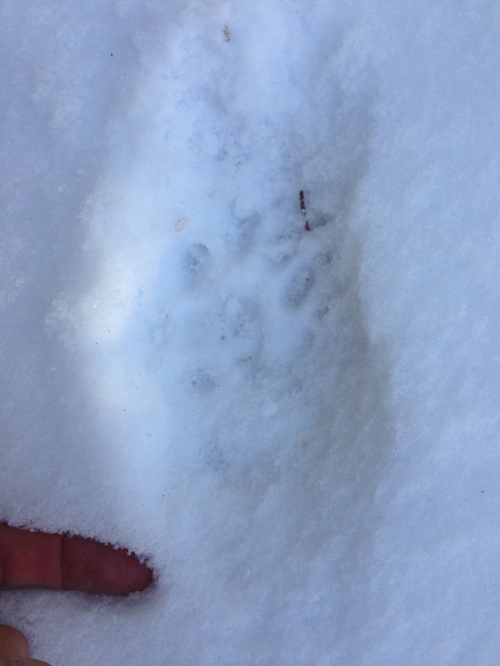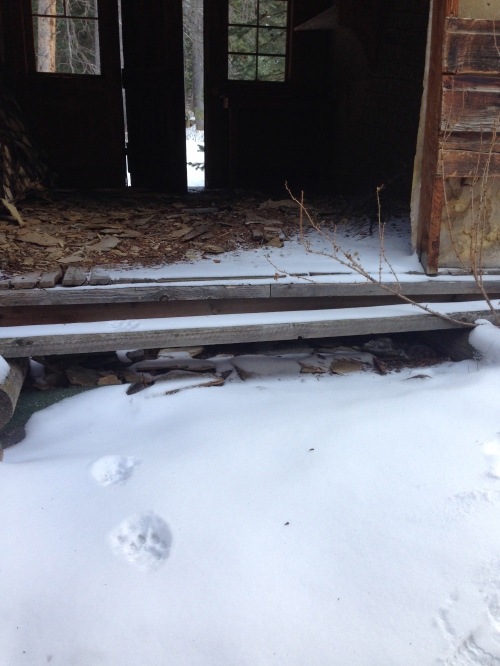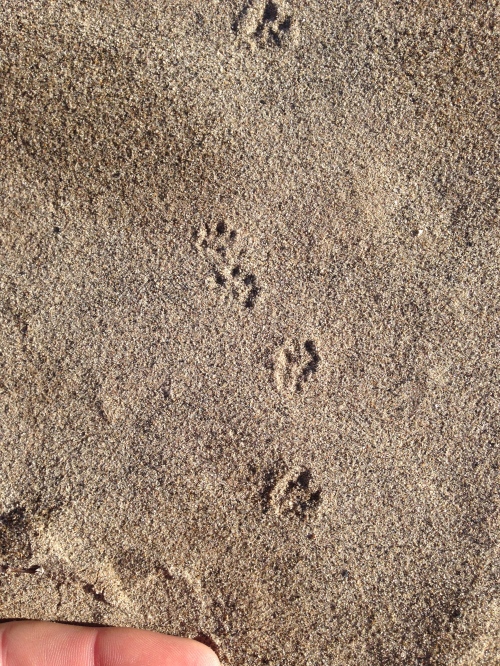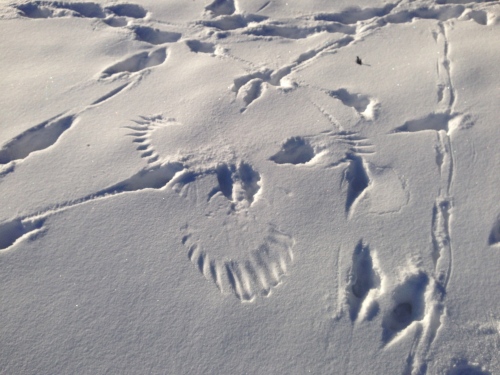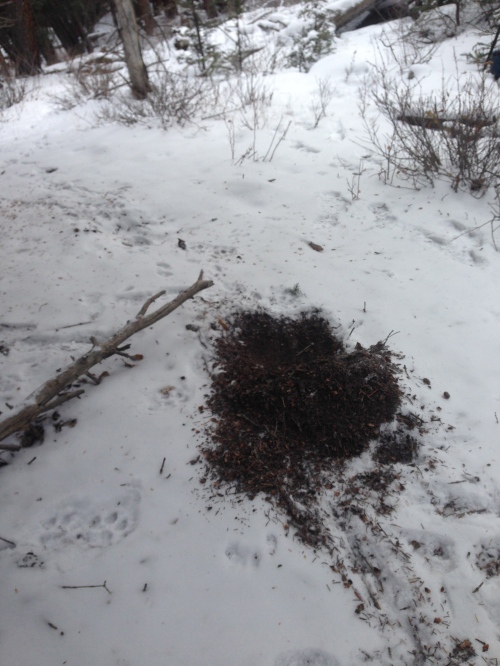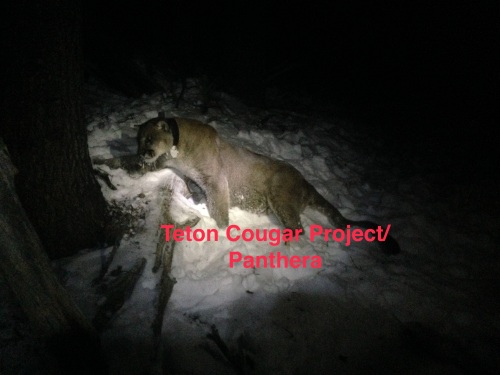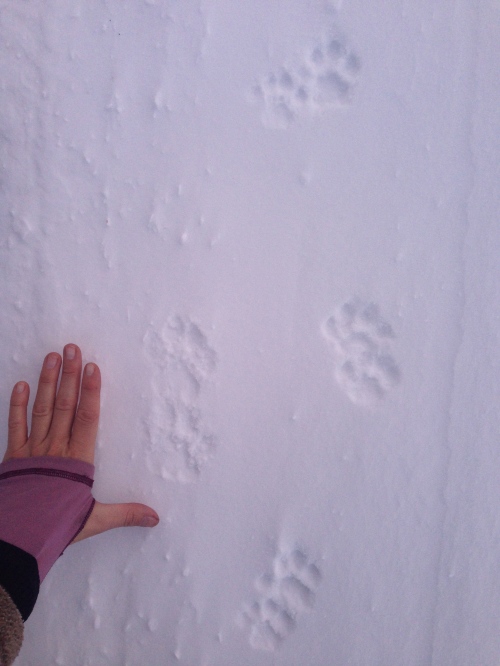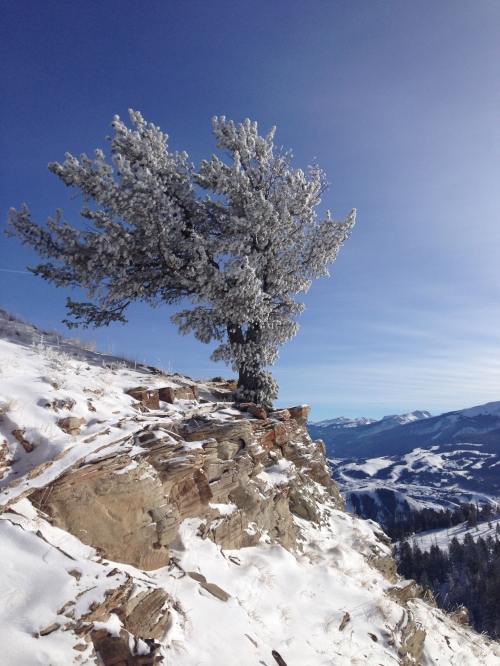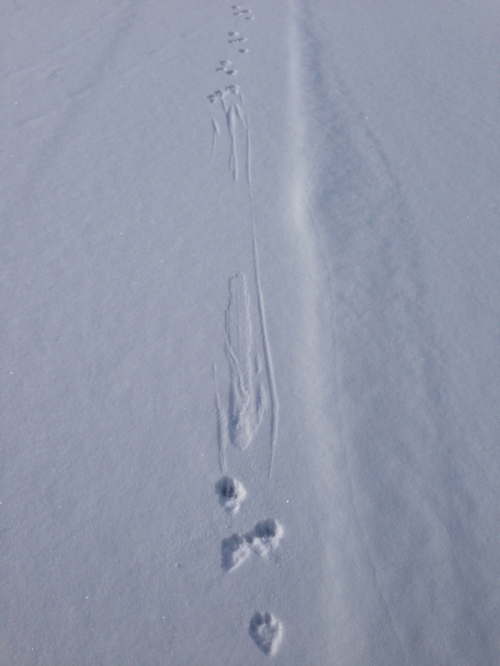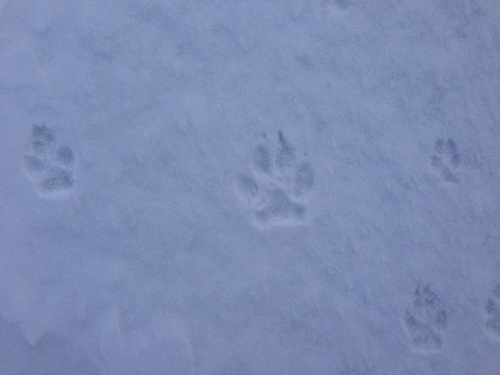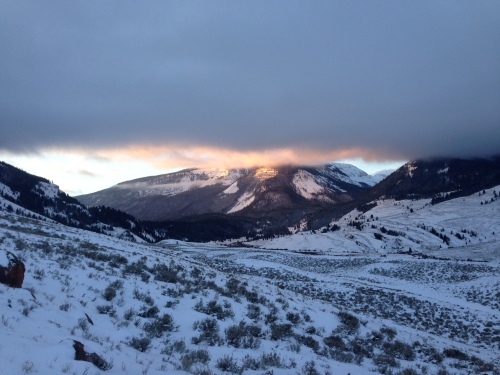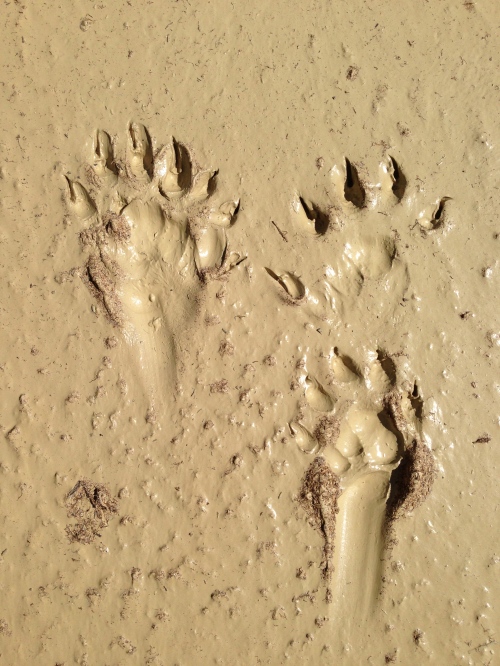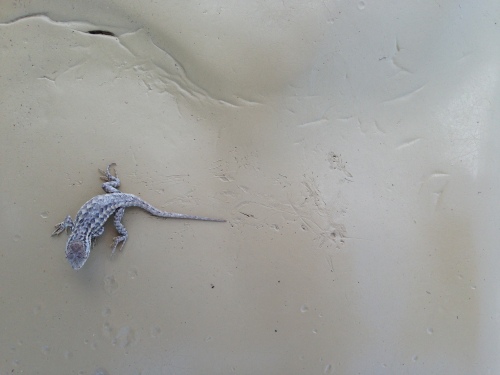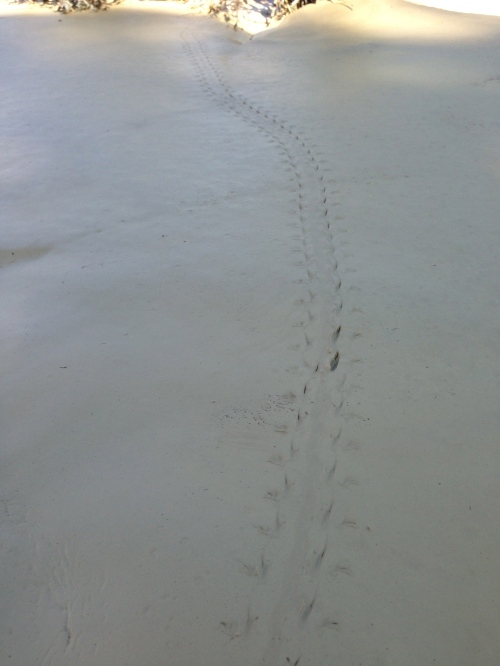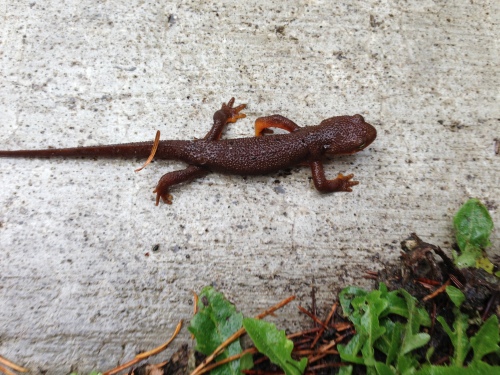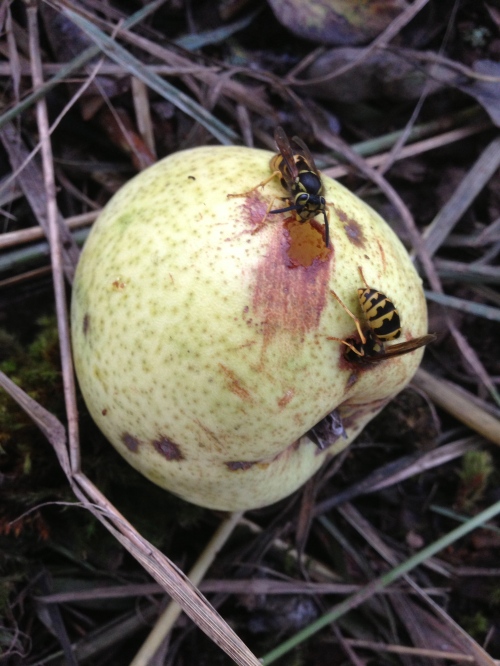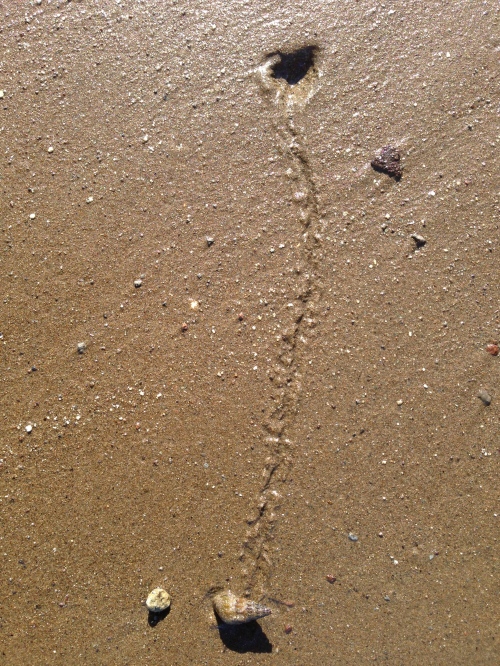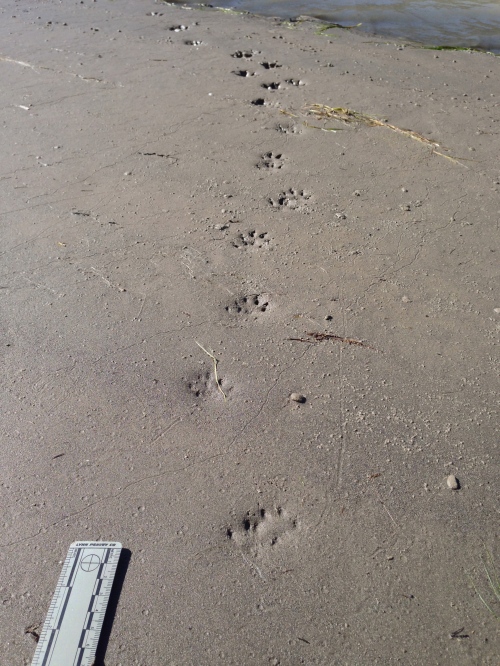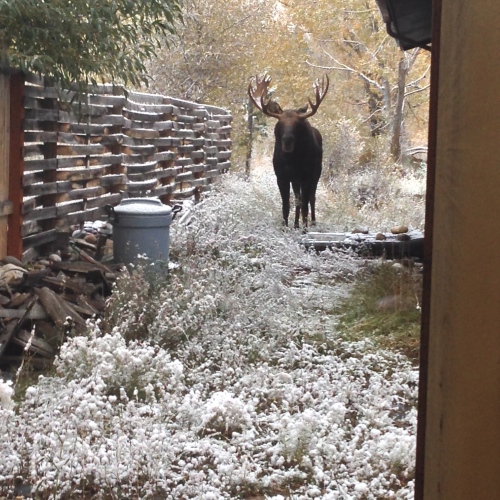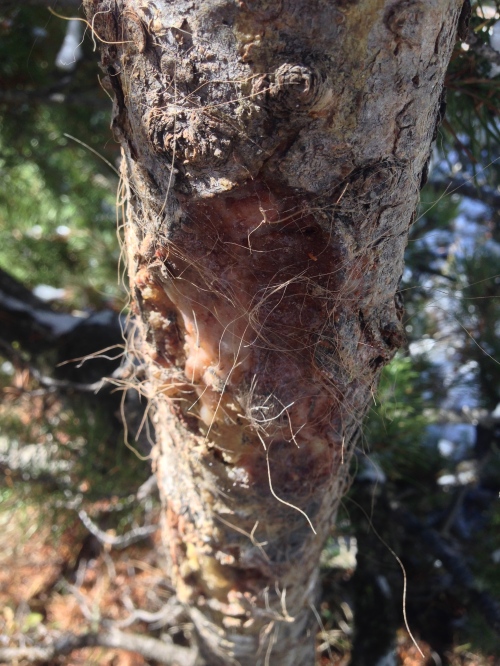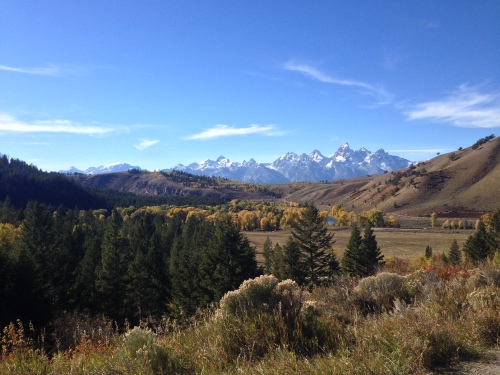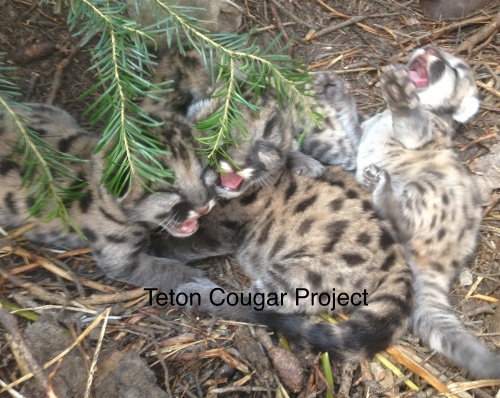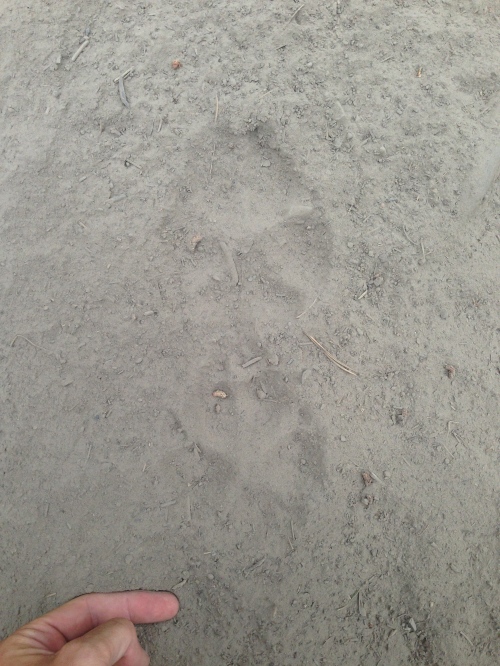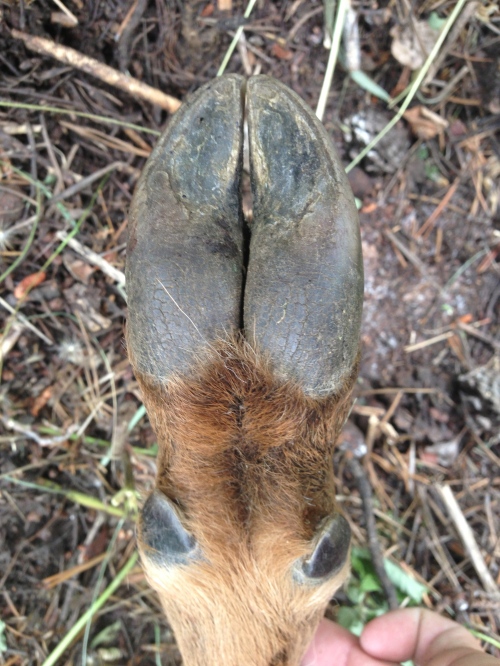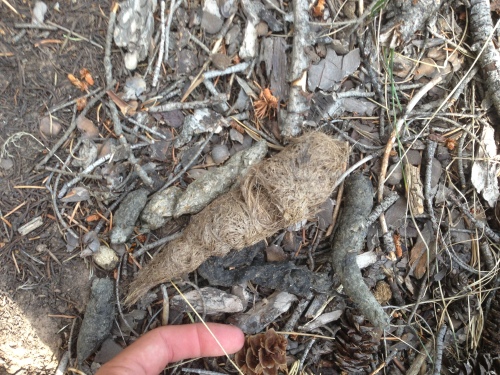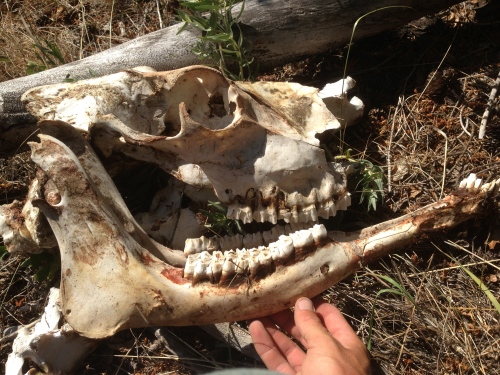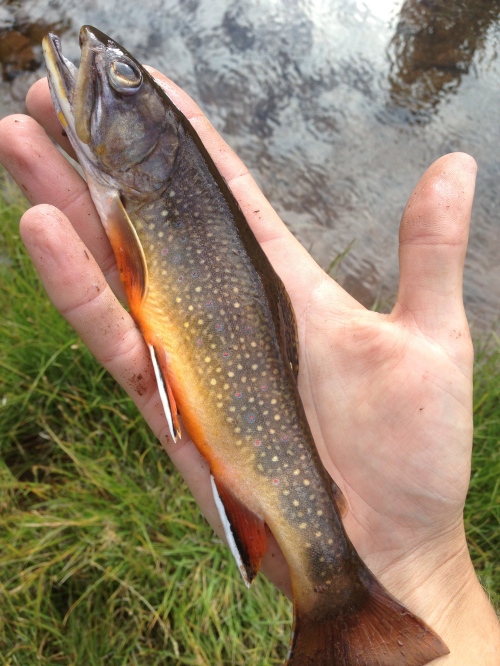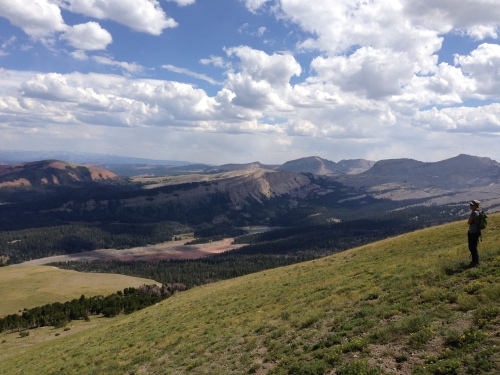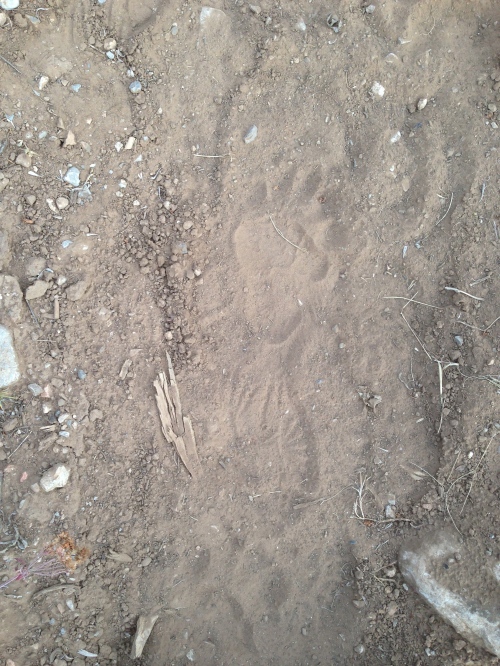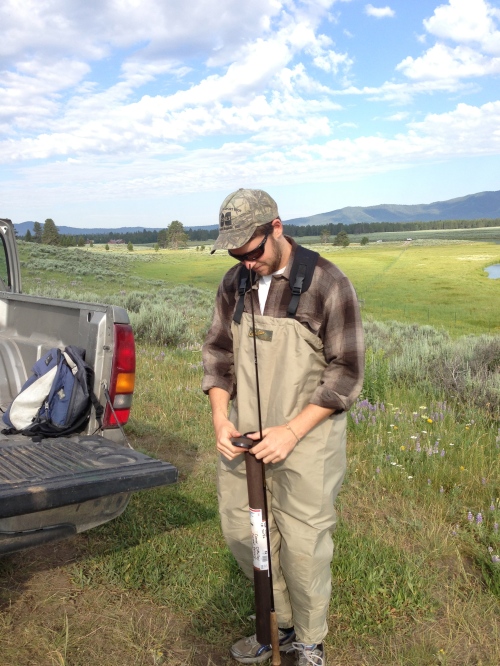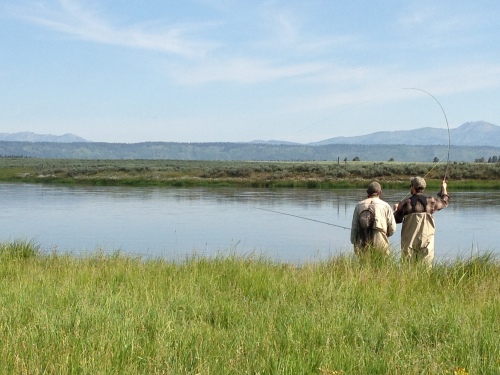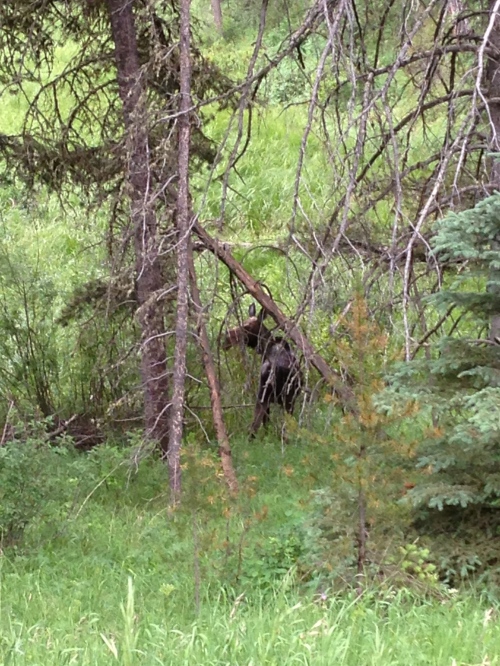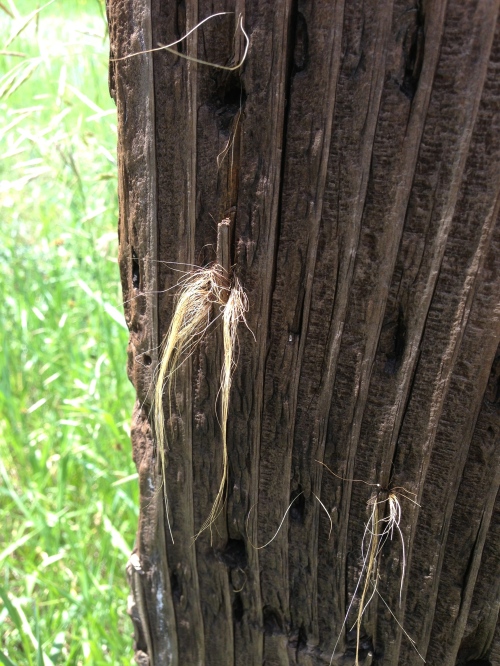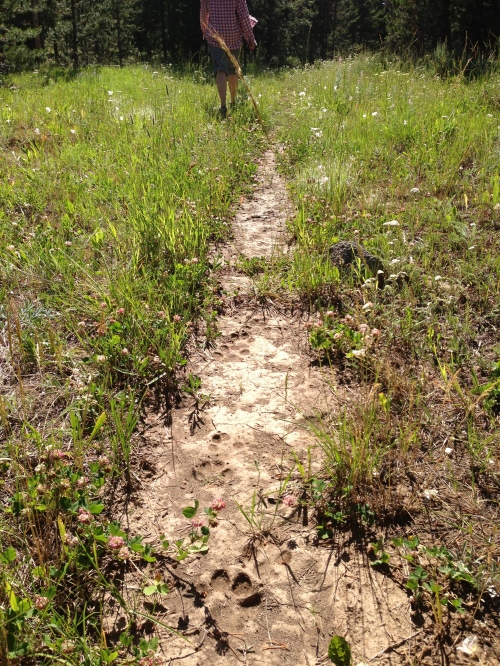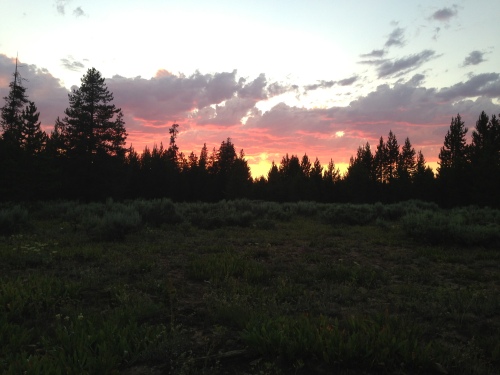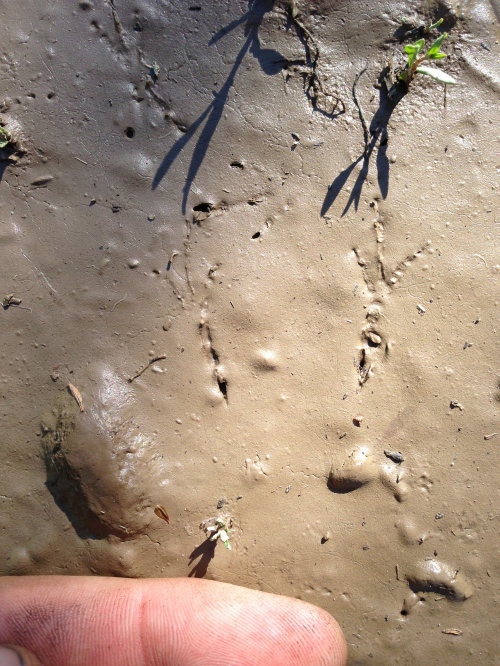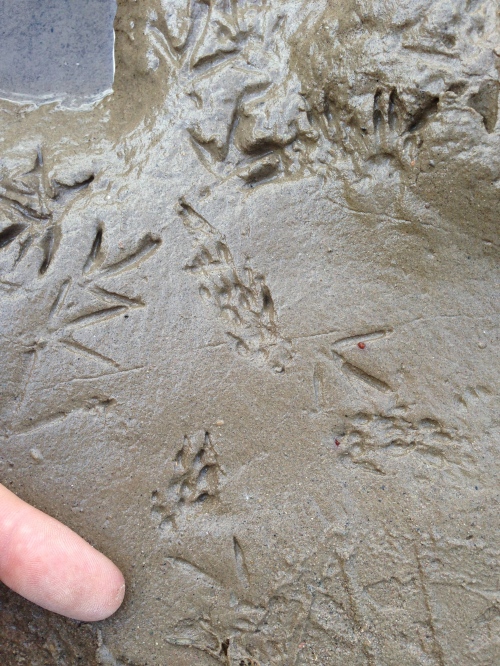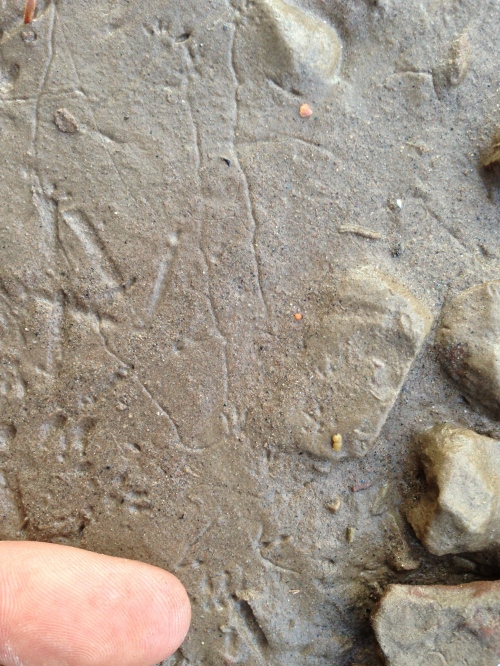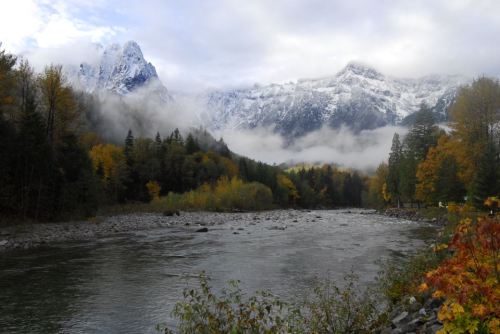Archive for the ‘Nature’ Category
Making a Hand Drill Fire in Northwest Wyoming
Posted in Nature, tagged friction fire, wyoming, yellowstone fire on August 22, 2015| 4 Comments »
Vole Tracks, Flicker Scat and other Tracks and Sign
Posted in Nature, Wildlife tracking, tagged meadowlark tracks on April 22, 2015| 1 Comment »
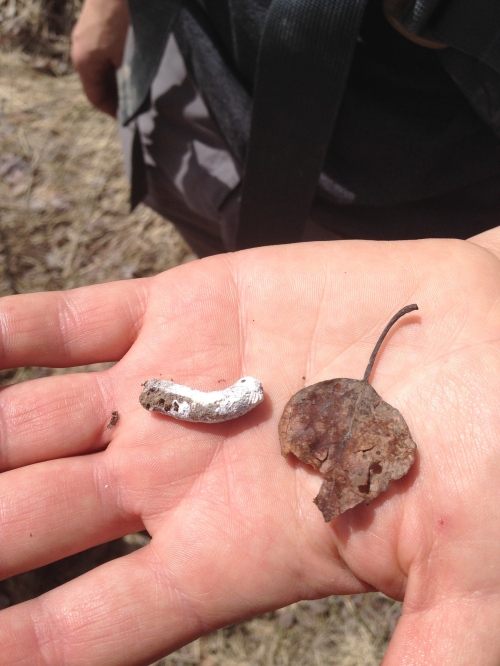
I’ve been finding tons of flicker scats lately. Here is one. Its a good bet that a solid bird scat that looks like this (coated in white) is a flicker scat… but break it open and find nothing but ants and sand and its 100% identified.
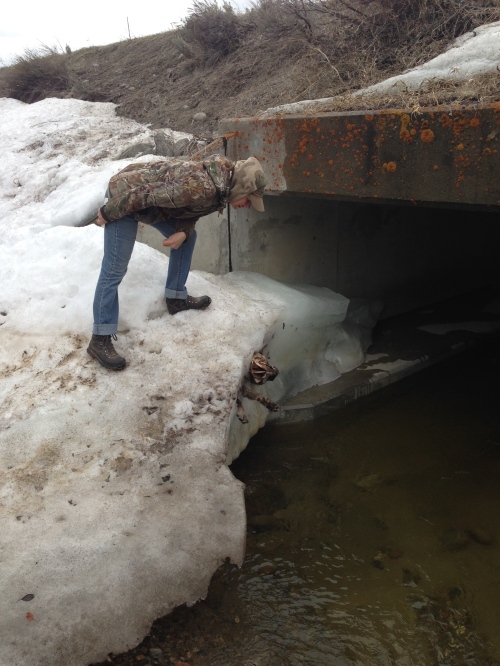
We found a wolf frozen in this iceberg. No idea what happened to it. This was right off the road so maybe it got hit by a car.
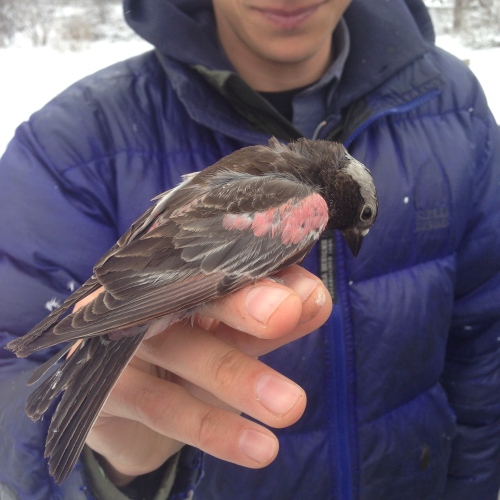
Got to do some bird banding of the black rosy finches. I love the black and pink coloration on these birds.
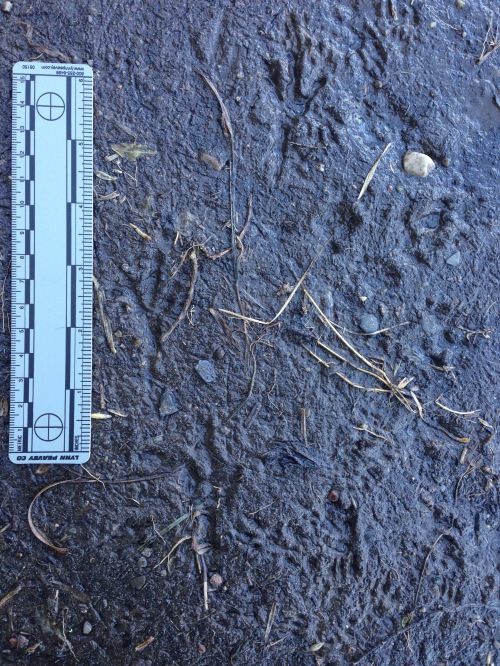
I believe these are meadowlark tracks. This is an area covered in meadowlarks and the size and blackbird shape are right. Some bird tracks are really hard to identify but I’m pretty sure that’s what these are..
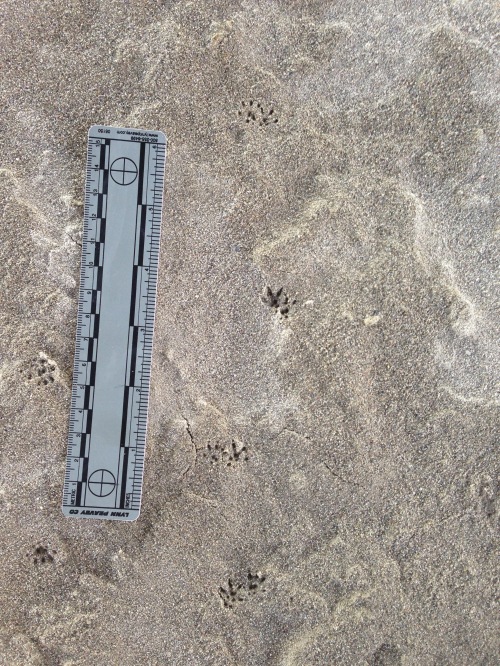
Some nice vole tracks. Voles have equal length front and hind legs so they are able to trot like you see here. Trotting helps them cruise through their grass tunnels without bumping the ceiling and it is also a great help in track identification.
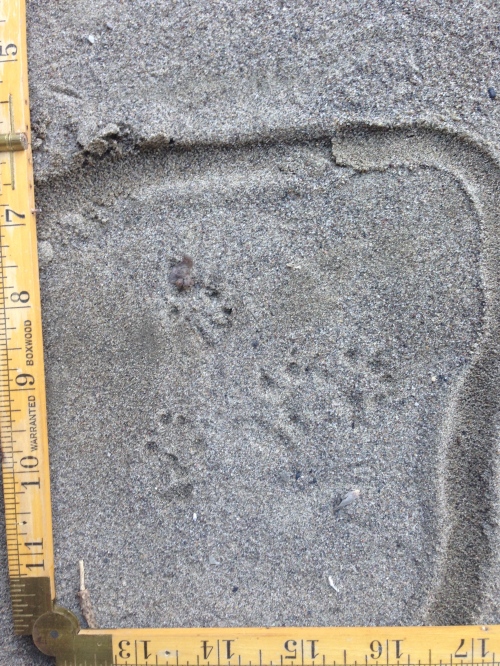
If you have put in some practice but you want to step up your tracking skills, look for tricky tracks that don’t make sense at first. Try to pick out the toes, heel pads, and which feet are fronts vs hinds. Stick with it until you figure it out. Sometimes it may take a LONG time and then it makes sense. These are red squirrel tracks; identifiable by the track in the lower left – a front foot.
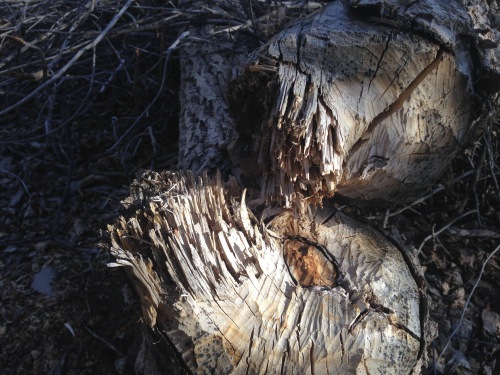
It might be hard to see but we found some bear hair stuck to this tree that a beaver took down. The paper would be titled “Relevance of Beaver Chewed Trees in Black Bear Grooming Habits.” It does make a perfect comb.
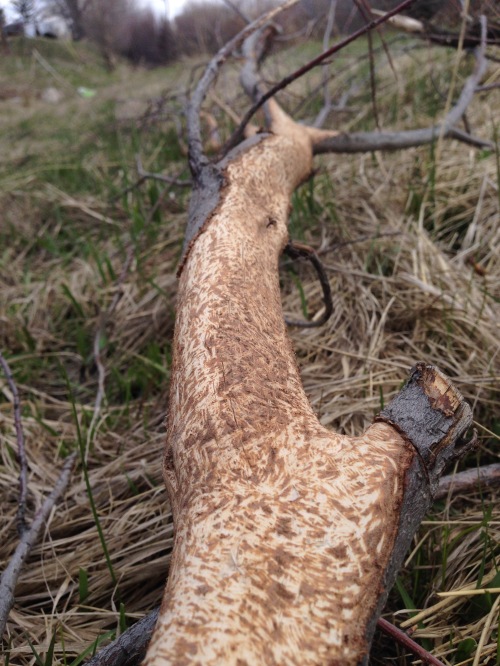
Vole feeding sign on a choke cherry branch. I’ve heard that pocket gophers will eat inner bark through the winter so I wonder if this could be them. This looks like classic vole feeding though.
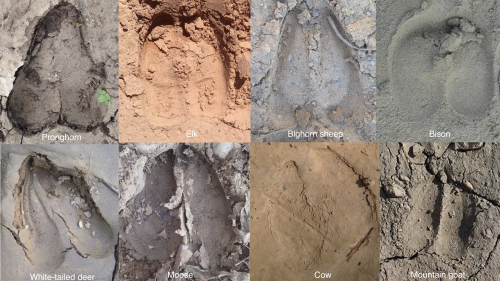
I’ve been working on local ungulates. Sometimes it is really hard to tell them apart so I made this little collage as a fun exercise.
Wildflowers, water shrew tracks, bugs infesting plants and more…
Posted in Nature, tagged Asphondylia auripila, grand prismatic, grizzly 399, water shrew tracks, yellowstone national park on July 20, 2014| 1 Comment »
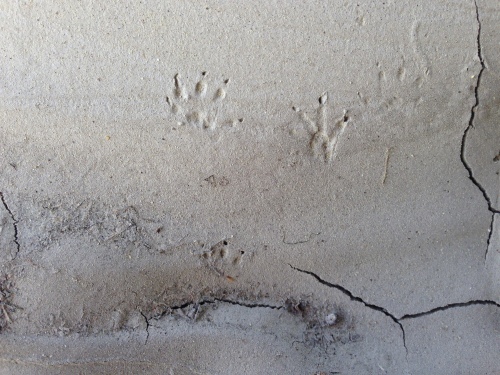
Water shrew tracks. Looks closely for five toes on all feet (rodents only have 4 toes on the front ((shrews are insectivores, not rodents))).
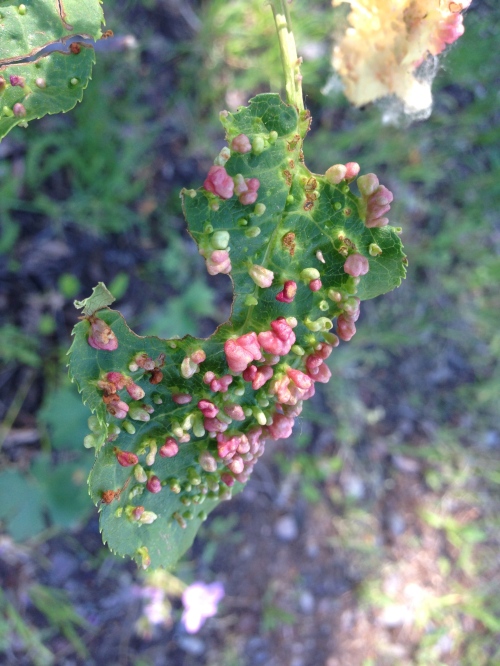
This is a cherry leaf infected by a “finger gall” mite. Eriophyes cerasicrumena does this to black cherrys… not sure if it also does this to our local choke cherry.
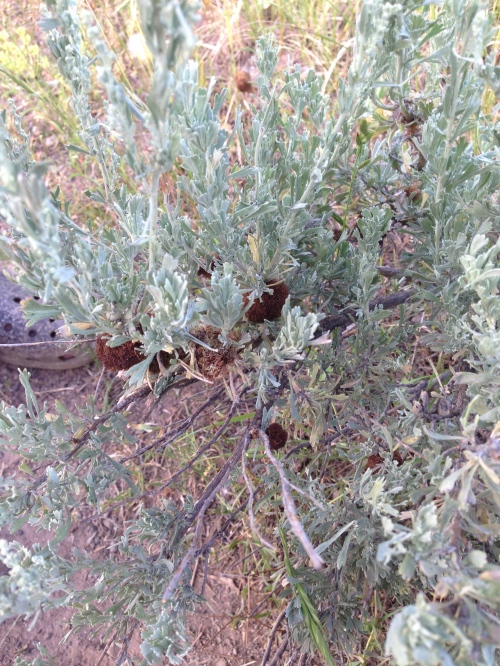
Another picture of the sagebrush infected by Asphondylia auripila. They create these fuzzy strange growths. They turn brown like this after they are dead… when they are young they are a green fuzzy growth.
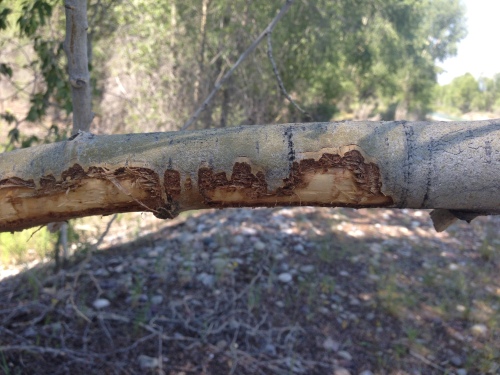
Beaver chew on a cottonwood branch that was about eye level. Must have been a deep snow drift here when the beaver was feeding.
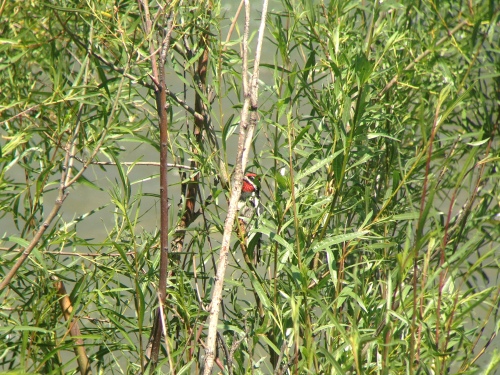
A hiding yellow-bellied sapsucker. This bird drills shallow, uniform “sap-wells” in trees which hardens and ferments, attracting insects to feed on the fermented sap. The bird returns to eat those drunk insects.
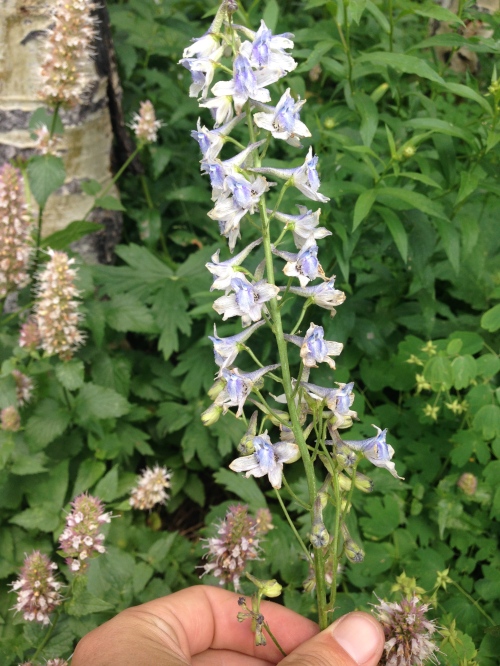
Delphinium glaucum. Tea and alcohol extracts from the seeds have been used for many years to kill lice and cure scabies.

Giant trumpeter swan tracks. This is North America’s largest waterfowl weighing 20 pounds and they can eat their entire body weight in a day.
The End of Capture Season
Posted in Hunting, Nature, Nature Awareness, Wildlife tracking, tagged Boone Smith, capturing mountain lions, Gros Ventre, Teton Cougar Project on December 16, 2013| 4 Comments »
December 15th marks the beginning of the Gros Ventre closure and the end of our capture season. We recollared three cats, uncollared one cat and put a new collar on a big male that we found cruising through the study area. Catching mountain lions consists of scouring the landscape, finding a fresh track, following the trail until you know the cougar is close, releasing barking dogs that send the cat up a tree, tranquilizing the cat while its in the tree, safely lowering it down, taking measurements, blood samples, putting on a collar, reversing the drugs and watching the cat walk away. It is an intensive effort! We spent 6 days trying to catch up to another male that we never did reach. We hiked 12 hours each day over mountains, deep snow, into the dark but never could catch up to him. It is hard work but also really fun to get to be part of the capture team and to spend all day following tracks of mountain lions. It is also awesome to spend time with the houndsmen and watch the dogs do their thing. Check out Boone Smith on NatGeo Wild. He has a variety of TV projects and is a member of the Smith family – a fourth generation houndsman. We are really lucky to get to work with him and his family.
Here are some pictures from the past month of adventures.
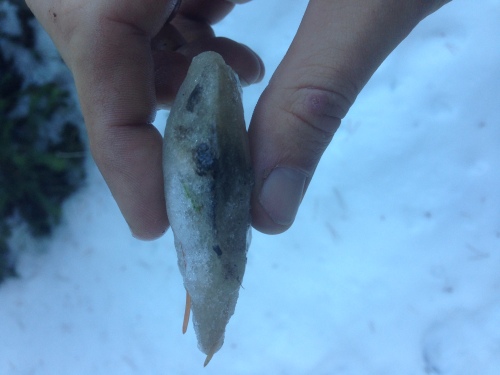
This is a fun random thing that you might find in elk country. It is a chunk of ice that gets compacted in the hoof then falls off. These weird ice chunks may stick around long after the tracks have blown away.
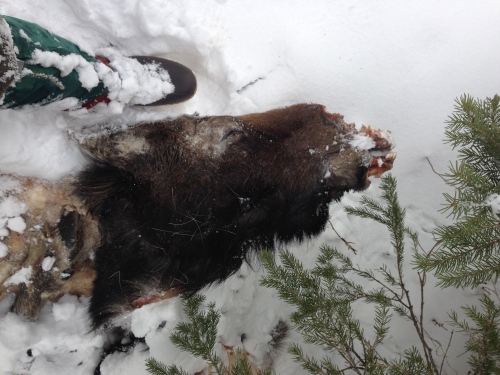
People wonder if the cats get beat up during the capture process. F47 went and killed this adult moose just a few days after we recollared her. Its the first time we’ve documented a female cougar killing an adult moose on this project. I guess she is feeling ok!
Some cool photos
Posted in Evolution, Nature, Nature Awareness, Wildlife tracking, tagged bear rub, bear sign, grizzly bear bite, Gros Vente, wildlife tracking in wyoming on October 6, 2013| Leave a Comment »
Well I’ve been busy lately. We took a trip to Oregon for another tracking evaluation. We had some great questions and intense rain. Now I’m back in Wyoming looking for work and a place to live so I can stay here through the winter. I’m getting very excited for the snow tracking season. Wolves, cougars, foxes, elk, moose, and easy trailing… its going to be fun!
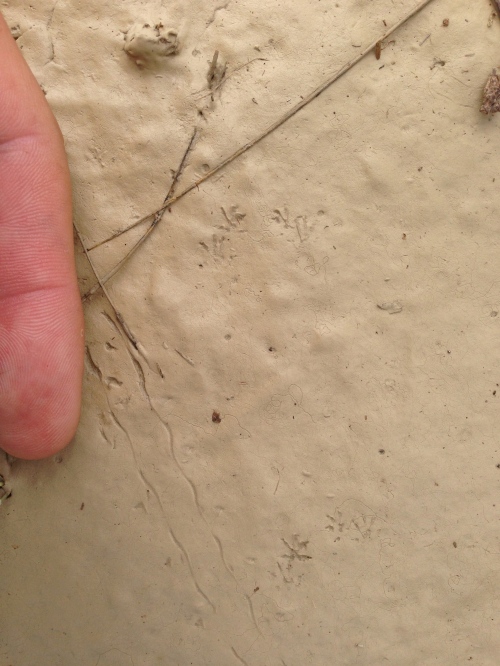
Awesome shrew tracks. These are actually easy to identify when they are clear. All mammals evolved from a creature with five toes on their front feet and five on their hind feet and shrews are one of the oldest mammals. So if you find a super tiny set of tracks and all feet show five toes, you’ve got a shrew.
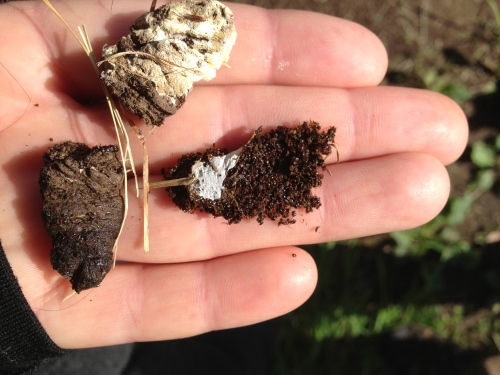
I believe these are pheasant scats. We found them in an open hay barn and they were totally full of ants.
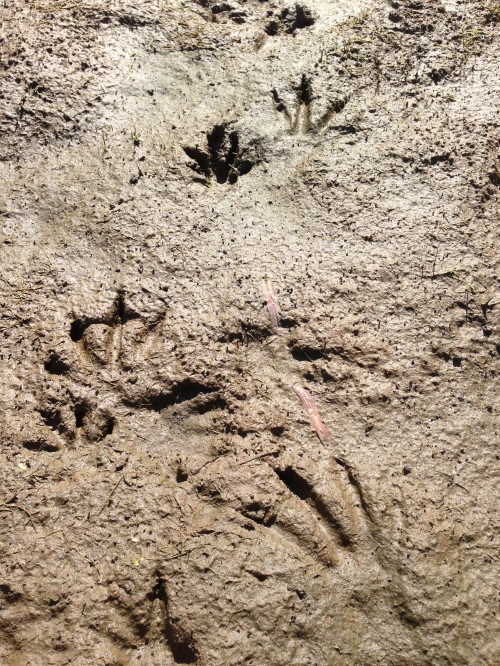
Some great nutria tracks. One cool thing I learned about nutrias is that they don’t have any webbing on their pinky toes of their hind feet.
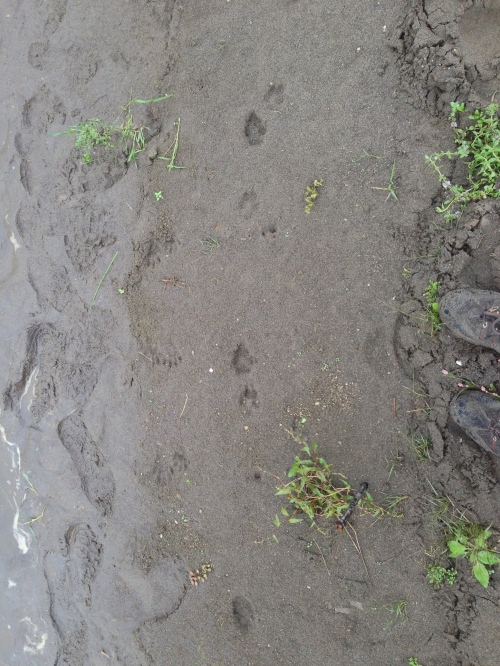
This was a fun eval question. This is an injured coyote. One of his tracks just shows up as a couple dots. Somehow he is able to make a living in this harsh world.
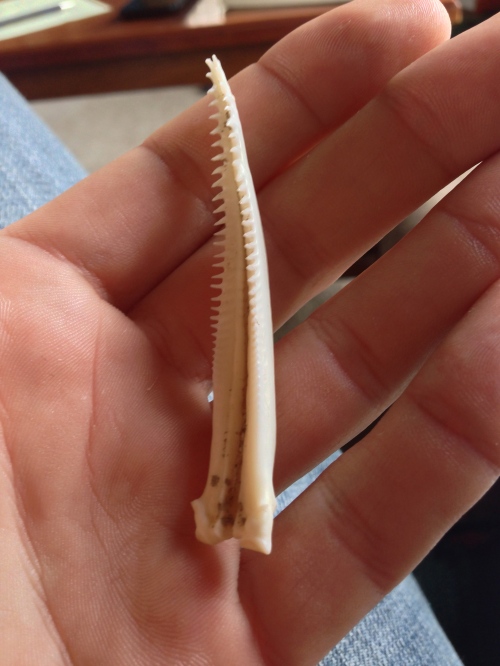
Mystery bone. Found this on the shore of a lake in Idaho. Haven’t been able to figure out what it is… some kind of fish I think. If you have ideas let me know! *Update: with the help of some folks I’ve learned that this is the spiney fin bone from a catfish! Pretty cool.
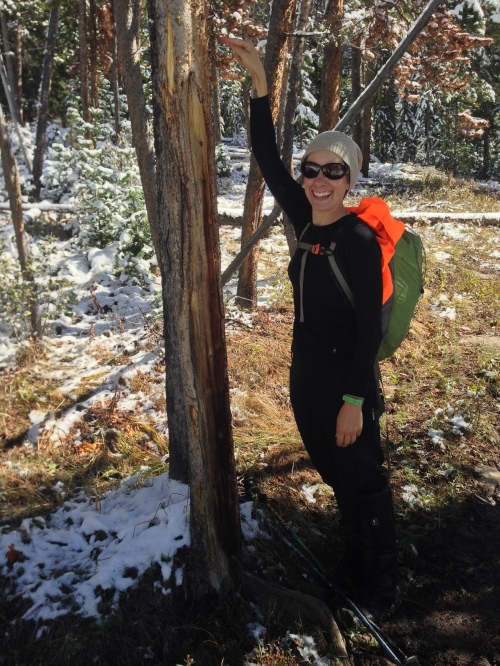
Here’s Michelle pointing to a grizzly bear bite. This was a big bear – the bite was about 6 and a half feet high!
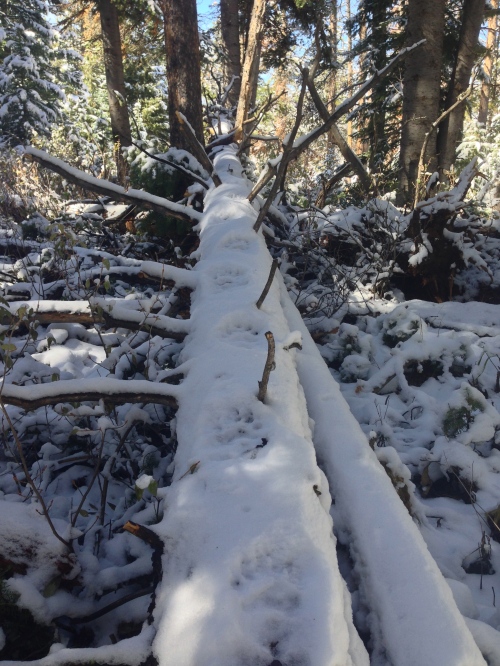
We had an amazing day of trailing yesterday. There is a brief window where there is snow on the ground and the bears haven’t started hibernating yet. We followed this female black bear for miles.
Cougar Kittens!
Posted in Nature, Nature Awareness, Wildlife tracking, tagged cougar kittens, mountain lion kittens, Teton Cougar Project on September 13, 2013| 3 Comments »
An exciting moment with the Teton Cougar Project – I was out for a routine hike checking a kill site of F51 but I couldn’t find anything… it was thick downfall and I started snooping around peaking into tunnels through the logs when I noticed 4 tiny breathing fur balls: cougar kittens! F51 had unexpectedly dropped four kittens and I found them when they were less than 3 days old. I took this short video on my phone – check it out! http://www.youtube.com/watch?v=5OdJ-Vj92KY&feature=youtu.be
Make sure the volume is up so you can hear them purring and doing this crazy coughing thing. Sorry about the text and low-quality but we had to do that for copyright reasons.
We were especially surprised by this discovery because F51 currently had a 10 month old kitten, Lucky. Normally the kittens don’t disperse and live on their own until they are 18 months old but apparently she kicked Lucky out early. We think she is too young to be killing deer so she must be living off grouse and snowshoe hare. Pretty crazy! We got a glimpse of Lucky yesterday and she looked a little skinny but quite healthy overall.
More summer pictures…
Posted in Nature, Nature Awareness on August 18, 2013| 2 Comments »
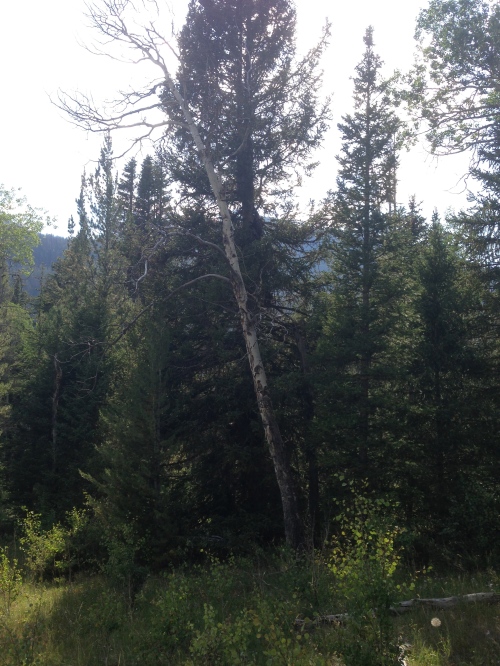
I spooked a family of black bears yesterday. The mom made some low grunts that sent the cubs up this tree. She continued making these vocalizations from the bushes while I tried to get a picture of the cubs. You might have to zoom in to find the two cubs.

View from the alpine where one of our cougars had a den. She abandoned her den and kittens. We will find out why tomorrow when Mark goes and investigates.
That’s it for now!
Wolf Tracking
Posted in Nature, Wildlife tracking, tagged fly fishing, henry's fork, wolf tracks on July 13, 2013| 2 Comments »
I’ve been on the road for a couple weeks now camping in Idaho, Montana and Wyoming. It is wild country out here. At one camp we woke up to find cougar tracks, black bear tracks, elk, moose, a grizzly bear rub and very fresh wolf tracks… all with in a couple hundred yards of our camp. Amazing! I don’t think I’ve ever seen so much mega-fauna packed into such a small space. We got on some great trails – fresh moose, elk, deer… but the best of all were the wolves. Lots of open ground and a recent rain made for incredible trailing and we got a rare insight into the lives if these animals.
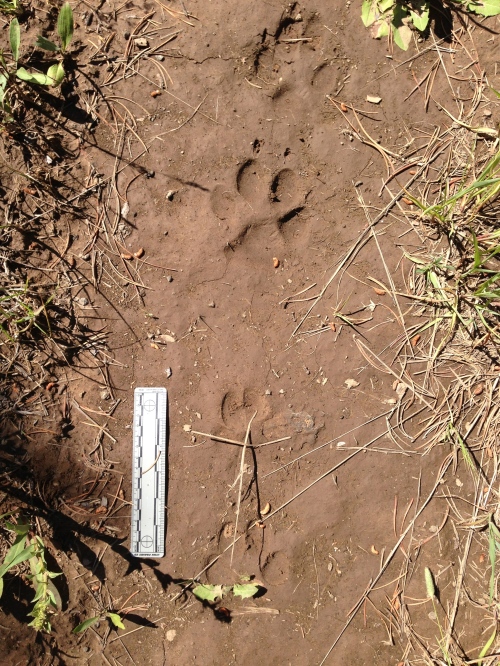
Here you can see a much larger wolf with a smaller one – I think this is the male and female out patrolling. They came to our camp the first night we were there and checked us out. From the bottom up it goes: front, hind (of the female) then front, hind of the male.
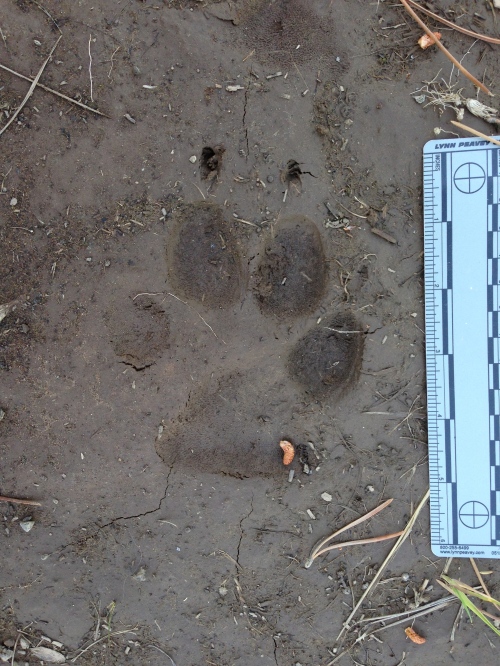
Perfect front track of a gray wolf. Sometimes its hard to get a feel for the size but this is a big track! That is a six inch ruler on the right.
A couple more days of free-wandering fun before we start our internship with the Teton cougar project. Will post more soon…
Off to the Grand Tetons
Posted in Nature, tagged grand tetons, Index Washington, yellowstone national park on June 30, 2013| Leave a Comment »
Tomorrow morning I’ll leave my cozy mountain home and head east to Jackson Hole. I have 18 days before I start my summer internship – lots of time for exploring wolf, cougar and grizzly bear lands. I’ll take lots of pictures. Wish me luck and let me know if you have any suggestions of places I should check out in northern Idaho, southwestern Montana or the Yellowstone/Grand Teton area. So long, Washington…
How to learn tracking…
Posted in Nature, Nature Awareness on May 19, 2013| 3 Comments »
I’ve had a couple people tell me lately that they want to focus on tracking but they don’t know where to start. Here are some of my suggestions.
Tracking is not an easy skill to acquire, mainly because there aren’t very many people that know about it. I have spent thousands of dollars, thousands of hours, many years and moved all over the country trying to learn tracking. I’ve made a real effort to find the best trackers in the country and spend time with them. I know this is not practical for most people but it is by far the fastest way to learn tracking – find someone who is a tracker, follow them around and pick their brain. This is what’s so great about the tracking evaluations (http://trackercertification.com/). When you take an eval, you get to spend two days with one of the best trackers in the world and be quizzed on everything they see. There are tracking classes and clubs all over the country – google them and seek them out.
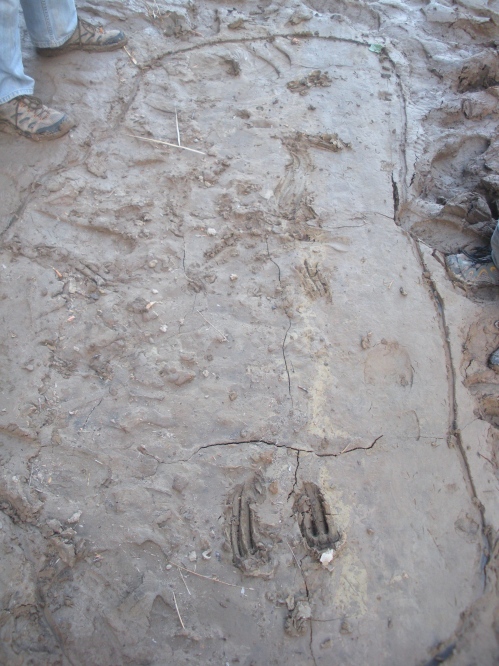
Here is one from an eval – the scene where a bobcat killed a ringtail. One of my all time favorite eval questions.
Here are some tips for folks that want to learn tracking:
1. Find good local tracking spots and go there every day. Under bridges, river banks, muddy atv roads, and sand pits are some of the best places. When I lived in San Diego I had a loop I could walk from my house with great track traps. Every morning I would grab my coffee, walk the loop and check the tracks. I learned a lot by spending half an hour every day looking at tracks. I think the regularity is very important to building an intuitive recognition of the patterns.
When you go tracking, always make an effort to look for things that you don’t know. As you grow in your skills it is easy to look for what you know – it is fun and comfortable. But you learn by pushing yourself to look for what you don’t know, then sticking with it until you figure it out. There are always more questions you can ask. If you figure out what animal made the track, next ask which foot it is, how old the track is, how was the animal moving, how the animal fits ecologically into this region, etc.
2. Get the field guides. We have amazing field guides today that didn’t exist ten years ago. This is helping people fly forward in their tracking/naturalist skills. Here are the must-haves (even if you don’t live in the PNW or California):
Mammal Tracks and Sign (Elbroch), Bird Tracks and Sign (Elbroch), Wildlife of the Pacific Northwest (Moskowitz), Field Guide to Animal Tracks and Scat of California (Elbroch, Evans and Kresky), Animal Skulls (Elbroch), Bird Feathers (McFarland and Scott), Practical Tracking (Leibenburg, Elbroch), Tracks and Sign of Insects and other Invertebrates (Eisman and Charney).
3. Strive to be a naturalist, not a tracker. In order to be a great tracker, you have to be a great naturalist. The point is to learn about nature, not tracks. Tracks are just an incredible resource for a naturalist to find animals and to see what they have been up to. Make a list of all the mammals, reptiles, amphibians, and birds of your region. This will require getting more field guides. Learn all the bird songs, the plants, trees, learn what everything eats (and what eats everything). I did the Kamana Naturalist Training Program. It was an incredible amount of work but gave me the confidence and tools to look things up and learn on my own. I highly recommend it.
4. Take as many evaluations as you can. http://trackercertification.com/calendar/ These are the best tracking workshops you will find. You will leave inspired and focused on where you can improve in your tracking abilities. What may take you years to figure out on your own you will learn in two days.
5. Take a lot of pictures. When you take pictures of tracks or sign, point the camera straight at it so the angle doesn’t obscure things. And put a ruler down for scale. It is great to cycle through your pictures later and re-learn what you saw that day. If you are stumped on some tracks or sign, take a picture and post it in one of the facebook tracking groups or send it to me – I’ll try to help.
It is a lot of work to be a naturalist and a tracker but there are few things in life that I have found to be more rewarding. The initial hump may seem insurmountable but with learning any new skill, you just have to tough it out. Go tracking regularly, make an effort to look things up and before you know it, you’ll gain some confidence and enter a new world full of incredible drama and magic. Suddenly the mysteries will begin to feel solve-able and less overwhelming. And you’ll begin to cherish the mysteries that you can’t figure out because those are the most fun anyway.
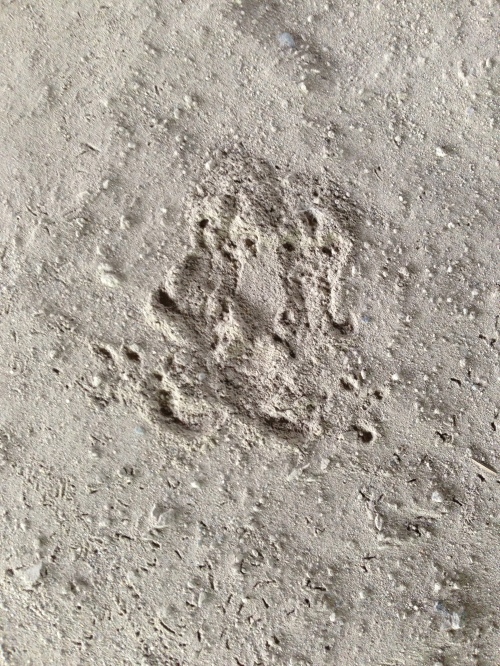
Sorry about the blur but here are tracks I found yesterday. What may seem like a crazy jumble of dots is actually a breeding pair of frogs. The female is dragging the male frog which is latched on to her back (this is called amplexus). I never would have learned to recognize this without my co-worker Fil who is writing a book on tracks and sign of reptiles and amphibians. Now that I know it I see it all over the place. It looks like regular frog tracks with an extra pair of legs dragging behind. Also in this picture are tracks of a spider, a beetle and a millipede.
